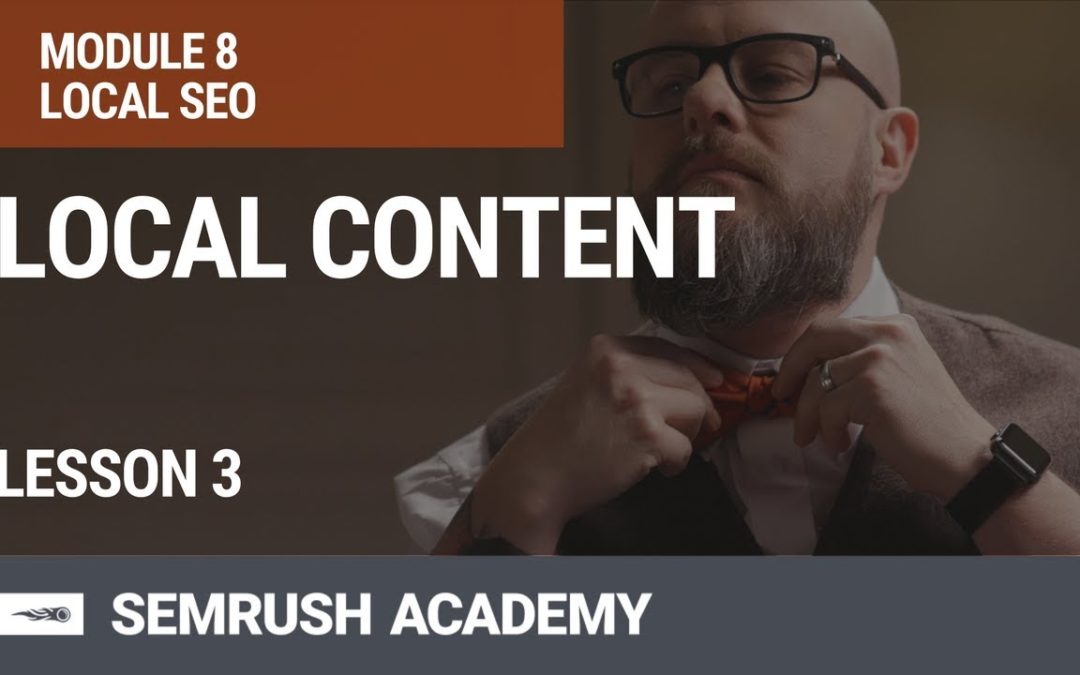Watch our latest video: How to Go Viral on Quora https://bit.ly/ViralOnQuora1
Subscribe to our YouTube channel! http://smr.sh/KdD
You will learn how to optimize a site to show up in searches in a particular geographic area.
Watch the full free course at SEMrush Academy: http://bit.ly/2lPfSdj
0:05 Locational relevancy
1:12 Localized blog content
1:43 Local content silos
✹ ✹ ✹ ✹ ✹ ✹ ✹ ✹ ✹ ✹ ✹ ✹ ✹ ✹ ✹ ✹ ✹ ✹ ✹ ✹ ✹ ✹ ✹ ✹ ✹
You might find it useful:
Find keywords that trigger specific Local packs with the Keyword Magic tool:
➠ https://bit.ly/3aPTLr8
Monitor your local competition with the Position Tracking tool:
➠ https://bit.ly/3bRU6uF
This course will help bring your business to the top of the map pack and local search results:
➠ https://bit.ly/3bRTwNv
✹ ✹ ✹ ✹ ✹ ✹ ✹ ✹ ✹ ✹ ✹ ✹ ✹ ✹ ✹ ✹ ✹ ✹ ✹ ✹ ✹ ✹ ✹ ✹ ✹
With local SEO, you have to optimize your site differently than what you’d do with traditional SEO. Topical relevancy is still your most important goal, but you also have to worry about locational relevancy.
Back in the day, you could simply stuff the name of your city into your text and that would be enough… But Google’s algorithm is too sophisticated for that to work anymore. Your content has to actually BE localized – it’s got to be about your targeted phrase AND the local area.
SMBs have a huge advantage in this area – it’s much easier for them to write localized content down to the neighborhood level. The big enterprise sites have a much more difficult time with localization – typically, you’ll have a location page for each of the locations, but product and service pages won’t have a geographic focus.
You’ll need to include your location keyword in all of the important page elements: title tag, H1 heading, content, image alt text, URL, and meta description – for every page on your site.
Write localized blog content as well. Your blog doesn’t have to be all about your business – talk about the local area, what’s going on in the community, and things like that. If you make your blog a local destination, you’ll get more traffic and you’ll build more local relevancy.
You’ve got to own your own back yard – make sure that you’re fully optimized and ranking well in local searches before you try to optimize for nearby cities. Because you don’t have a location in the nearby city, it’ll be much harder to rank there.
If you want to try to show up in a city where you have no physical location, you can use an advanced strategy called local content silos. Basically, you create a siloed off area of the site that’s geo-optimized for the nearby city. You create a strong internal linking structure within the silo with geo-optimized anchor text. Then you’ll have to double your link building efforts, so you can build links from the targeted city to the silo on your site.
It takes a long time – you’re trying to build relevancy for a city where you have no physical location, and you’re trying to beat competitors who are actually located there… but it does work. You won’t show up in the map pack, since it’s so heavily influenced by proximity, but you can show up in the localized organic results.
In the next lesson we’ll talk about other factors that influence local relevancy.
#LocalSEO #LocalContent #SEOcourse #SEOtutorial #SEMrushAcademy
source

